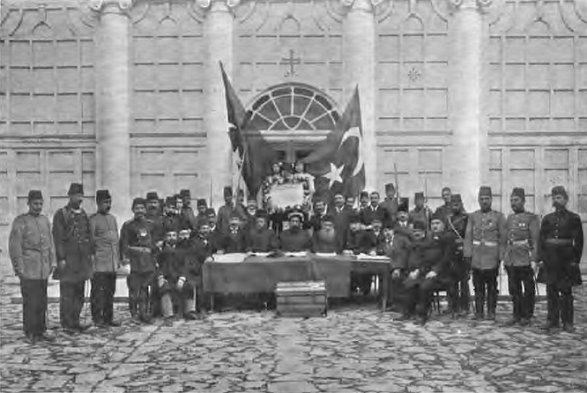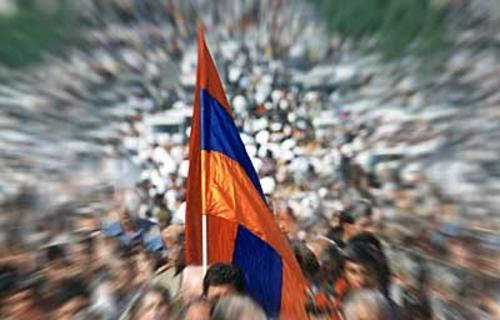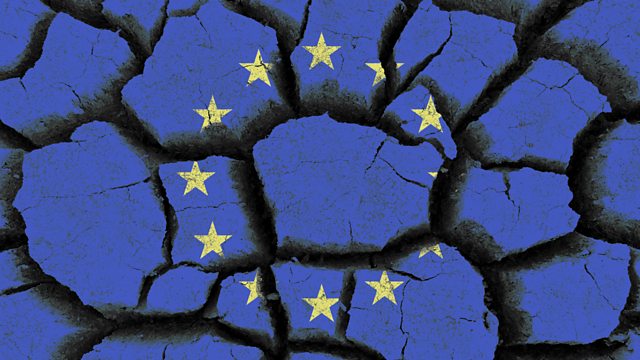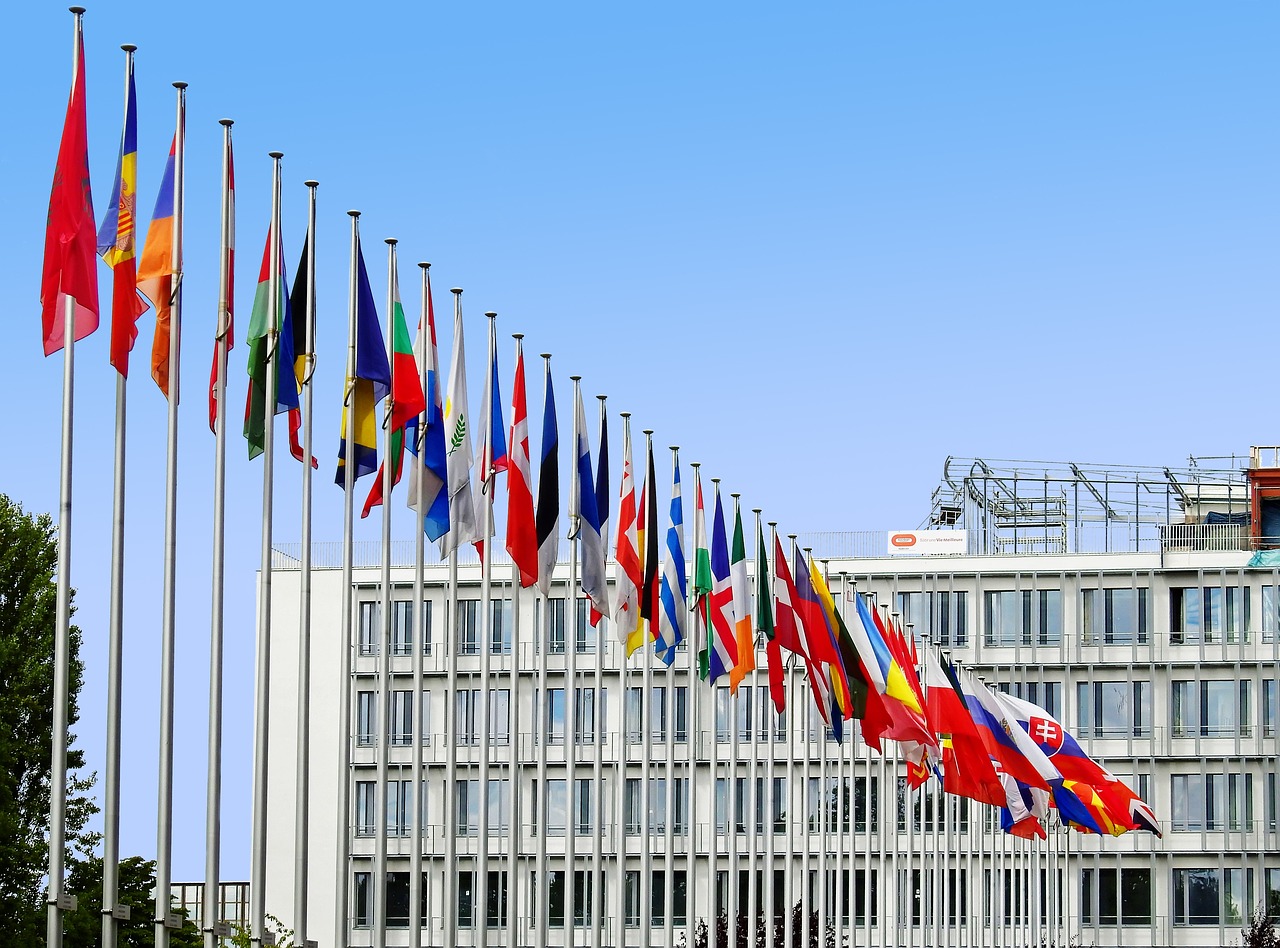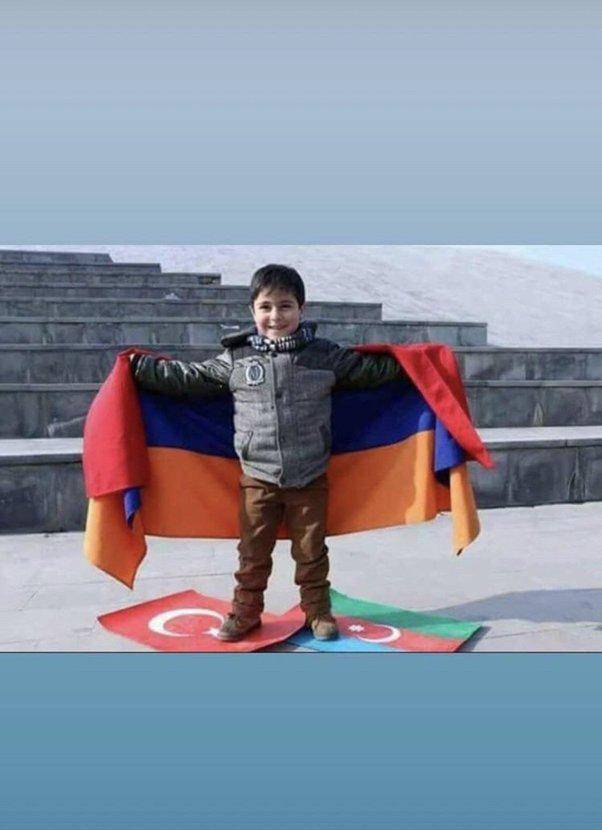The Bloody Co-existence of
Greek Cypriots and Turkish Cypriots
(1963-1974)
George Nakratzas
Any nationalist expansionist policy can be carried out only by means of war. And the people have to be psychologically prepared for this by a propaganda device which idealises their own acts and demonises those of the enemy.
Greece has employed this device in the past, and continues to do so today, one typical exponent being the new Archbishop of Athens, Christodoulos, who has publicly, in the presence of the President of the Hellenic Republic, referred to the Turks as ‘the eastern barbarians’.
It is a well-known fact that the Turks treated the Greek minority in Istanbul with great barbarity in 1955; and it is equally well known that dozens, if not hundreds, of Greek Cypriot captives were executed in Cyprus in 1974. Rauf Denktash has publicly admitted it.
But what the young people of Greece have no idea of is that Turkish Cypriots were murdered by the parastatal groups run by Sampson, Yeorgadzis, and Lyssaridis between 1963 and 1967. It should be borne in mind that at that time the Cypriot government was responsible for safeguarding the life, the honour, and the property of all Cypriot citizens, irrespective of national or religious identity.
A somewhat more detailed analysis of the Greek and foreign literature on the events in Cyprus in this period may fill the gap in young modern Greeks’ knowledge.
The invasion of Cyprus by the Turkish army in 1974 resulted in the partition of the island into two zones, a northern zone populated by Turkish Cypriots and Turkish settlers and a southern zone populated by Greek Cypriots. Since then, the Cypriot government has steadfastly demanded the withdrawal of the Turkish occupation forces so that Cyprus may be restored to its former status. However, a study of the relations between the two communities between 1963 and 1967 may tell us something about the quality of their ‘peaceful co-existence’.
Regarding the Greek Cypriots’ supposed intention to live in peace and equality with the Turkish Cypriots, an extract from a speech by Archbishop Makarios in the village of Panayia is particularly telling. It is quoted by Rustem and Brother, according to whom, on 4 September 1962, Makarios said:
Until this small Turkish community, forming a part of the Turkish race, which has been the terrible enemy of Hellenism, is expelled, the duty of the heroes of EOKA can never be considered as terminated. (1, p. 47) A letter from Denktash protesting about the Panayia speech was never answered.
Fourteen months later, on 30 November 1963, Makarios submitted his famous thirteen-point amendment of the Constitution, in direct contravention, as he himself publicly admitted, of the Geneva Convention (2, p. 56). The Geneva Convention ruled out any unilateral change to the Cypriot Constitution, as also any partition of the island or unification with Greece. It should be borne in mind that even today the Republic of Cyprus derives its legitimacy from the Geneva Convention.
Makarios’s proposed changes would have meant that the Turkish Vice-President would lose his right of veto and would be elected not by the Turkish Cypriots but by the parliamentary majority, i.e. the Greek Cypriots. These two articles, together with another nine similar ones, would have lost the Turkish Cypriots the rights which the Cypriot Constitution had guaranteed them until then.
The Cypriot mass media presented the Turkish Cypriots’ refusal to accept this unilateral amendment of the Constitution as ‘Turkish insubordination to the state’, which was quite untrue, because, as we have seen, from a legal point of view it was not the Turkish Cypriots, but Makarios who had made a unilateral, arbitrary attempt to violate the Constitution.
General Karayannis, Commander of the Cypriot National Guard, confirmed that it was not the Turks who initiated the so-called insubordination in an interview in Ethnikos Kirix on 15 June 1965: When the Turks objected to the amendment of the Constitution, Archbishop Makarios put his plan into effect and the Greek attack began in December 1963. (3, p. 87)
That Makarios had a premeditated plan to exterminate the Turks is also indirectly confirmed by the Communist Party of Cyprus, which published the following critique of the Archbishop in issue No. 57 of its organ Neos Dimokratis in July 1979: Armed by Makarios, Mr Lyssaridis . . . formed his own armed bands, which, in 1963-4, together with those of Yeorgadzis and Sampson, waged a ‘liberation struggle’ against the Turkish Cypriots and as a result brought
us the Green Line and, eventually, Attila. (2, p. 67) That the sole purpose of the so-called liberation struggle was to force the Turkish Cypriots to yield to Makarios’s unilateral amendment of the Constitution is also officially revealed by an article in the Cypriot newspaper Haravyi, which was published on the second day of the clashes, 22 December 1963: And since it is accepted that the tension is the result of the climate created by the Zurich and London agreements and the undemocratic terms of the Constitution, . . . the Turkish government, . . . which is inflaming the tempers of our fanatical compatriots, and the Turkish Cypriot leadership must reconsider their negative attitude and approach the President of the Republic’s proposals in a constructive manner. (2, p. 73)
The Greek Cypriot assault on the Turkish Cypriots started on 21 December 1963, when Greek Cypriot police officers shot and killed a Turkish Cypriot couple in the Turkish sector of Nicosia while attempting to carry out a spot check.
The most serious attack was the assault on Omorfita, a suburb of Nicosia inhabited by 5,000 Turkish Cypriots. The Greek Cypriot parastatals were headed by Nikos Sampson, whom the Greek Cypriot press henceforth dubbed ‘the conqueror of Omorfita’. The material damage wreaked by Sampson’s parastatals in Omorfita is described in the UN Secretary General’s report No. S/5950 to the Security Council, which states that 50 houses were totally destroyed and 240 partially destroyed (4, para. 180). As for the human losses, 4,500 Turkish Cypriots managed to flee to the Turkish sector
of Nicosia and 500 were captured and taken to Kykkos School in Nicosia, where they were held with 150 Turkish Cypriots from the village of Kumsal.
On Christmas day, 150 of the 700 or so captives were selected and dragged away, and the sound of shooting followed.
Gibbon reports that an English teacher at Kykkos School told the High Commission that she had seen the results of the shooting; whereupon, for security reasons, the British administration put her on the first plane to London, because she was the only eye witness to what had happened (5, p.
139). As for the 150 captives, the Greek Cypriot authorities told their families for many years that they should regard them as missing. Other major assaults by the Greek Cypriots near Nicosia targeted the villages of Mathiati, Ayos Vassilios, and Kumsal. In Kumsal, the Greek Cypriot parastatals executed 150 people in cold blood.
The most apalling photograph, which went round the world, showed three small children and their mother lying dead in a pool of blood in the bath in their home. These unfortunates were the family of Major Ilhan, an officer in the Turkish expeditionary force in Nicosia (3, p. 95).
In the surgical clinic in Nicosia Hospital, the Greek Cypriots dragged from their beds twenty-two Turkish Cypriot convalescents, all trace of whom vanished for ever (3, 91).
Government and parastatal armed forces continued their attacks on the Turkish Cypriots over the next four months. One notable incident, which almost provoked a Greek-Turkish war, took place at Famagusta, where, on 11 May 1964, three Greek officers and a Greek Cypriot policeman took their
car into the Turkish sector, possibly intending to make a display of power. A Turkish Cypriot policeman attempted to obstruct them, there was an exchange of fire, and in the end two of the Greek officers, the Greek Cypriot policeman, and a passing Turkish Cypriot lay dead. Two days later,
the Greek Cypriots abducted thirty-two Turkish Cypriots, who were never seen again. The abduction is confirmed by the UN Secretary General’s report No. S/5764 (6, para. 93).
Lastly, on 9 August 1964, there was the attack on the Turkish Cypriot enclave of Kokkina-Mansoura, where the Turkish air force ended the hostilities by dropping napalm bombs.
The UN Secretary General’s report No. S/5950, para. 142, tells us that, during the period of the hostilities ? from 21 December 1963 to 8 June 1964 ? 43 Greek Cypriots and 232 Turkish Cypriots disappeared and have been officially posted as missing ever since. The missing Turkish
Cypriots include the 150 hostages from Kykkos School in Nicosia and the 32 abductees from Famagusta.
The Cypriot media constantly show pictures of Greek Cypriot women holding photographs of their nearest and dearest and seeking information about their whereabouts; yet the Greek media have never shown similar pictures of Turkish Cypriot women seeking information about their own lost
relations.
The termination of the Cypriot government’s assaults on the Turkish Cypriots led to the creation of Turkish Cypriot enclaves, where the Turkish Cypriot refugees lived in wretched conditions for no less than eleven years. According to Kranidiotis, in his book Unfortified State: Cyprus 1960-74
(in Greek), these enclaves occupied 4.86 per cent of Cypriot territory Seeing that the Greek Cypriot armed bands were unable to assert themselves over the Turks, . . . on 26 December, Makarios was obliged to accept the Green Line. . . . Six large Turkish enclaves were formed, . . . which
corresponded to 4.86 per cent of the territory of Cyprus. (2, p. 75) From 1964 to 1967, owing to the restrictive measures imposed by the Greek Cypriot government, the day-to-day efforts of the confined Turkish Cypriots consisted exclusively in a struggle for survival. Apart from imposing an economic embargo on the enclaves, the Makarios administration also banned the supply of strategic commodities, such as cement, tractors, men’s socks, and wollen clothing.
The imposition of the military dictatorship in Greece in 1967 heralded fresh oblems for Cyprus. On 15 November 1967, Greek and Greek Cypriot forces armed with cannon, machine-guns, and bazookas attacked the lightly armed Turkish Cypri- ots in the villages of Ayos Theodoros and Kofinou in the Larnaca area. As the defen- ces crumbled, the Greek Cypriots killed twenty-seven Turkish Cypriots (3, p. 139).
The incident brought Greece and Turkey to the brink of war, which was avoided only when the illicit Greek division and General Grivas were recalled from Cyprus.
The slaughter and looting at Kofinou were confirmed in the Greek parliament on 21 February 1986 by Andreas Papandreou, who spoke, inter alia, of the ‘great provocation of 15 November 1967,’ and added that the operation had been ‘ordered by the Supreme Command of the Greek Armed Forces [and] killing and looting took place’ (2, p. 33).
The military junta brought its political career to an end in 1974 with the invasion of Cyprus and an attempt on Makarios’s life. We shall not discuss subsequent events here, because both warring sides perpetrated crimes against humanity during that period.
Even now, both the Greek and the Turkish propaganda do their best to convince us that such acts of barbarity were commited exclusively by the other side. But this sort of propaganda is mainly intended for domestic consumption.
What needs noting is that a war was fought between two nations in 1974, and it is usually the case in any war situation that criminal elements seize the opportunity to legitimise acts that would land them in prison in peace time. The reason why the blame lies so heavily on the Greek Cypriot side is the fact that, between 1963 and 1967, the Cypriot government was exclusively responsible for any acts committed by Greek Cypriot government or parastatal armed forces.
During the forthcoming talks on the island’s entry into the European Union, the Republic of Cyprus will have two questions to answer. Since the Cypriot government refuses
1) either to recognise the Turkish Cypriot state
or
2) to countenance a loose Greek-Turkish Cypriot confederation,
which of the two remaining solutions has it in mind?
1) That the Turkish Cypriots should return to the villages in which they were living before 963? or
2) That the Turkish Cypriots should return to the enclaves in which they were confined for eleven years?
Literatur
1. Rustem, and Brother,. (1998) : Excerpta Cypria For Today
Edited by Andrew Faulds MP , Lefkosha-Istanbul-London
The Friends of North Cyprus Parliamentary Group
The House of Commons, London SW1, ISBN 9963-565-09-3
2. Oberling, P., (1982) : The Road to Bellapais, Social Science
Monographs, Boulder Distributed by Columbia University Press, New York, ISBN
88033-0000-7
3. Report of the Secretary-General to the Security Counsil on the United
Nations operation in Cyprus , Document S/5950, 10 September 1964.
4. Gibbons, H, S., (1997) : The Genocide Files
Charles Bravos, Publishers, London , ISBN 0-9514464-2-8
5. Report of the Secretary-General to the Security Counsil on the United Nations
operation in Cyprus , Document S/5764, 15 Juni 1964.

